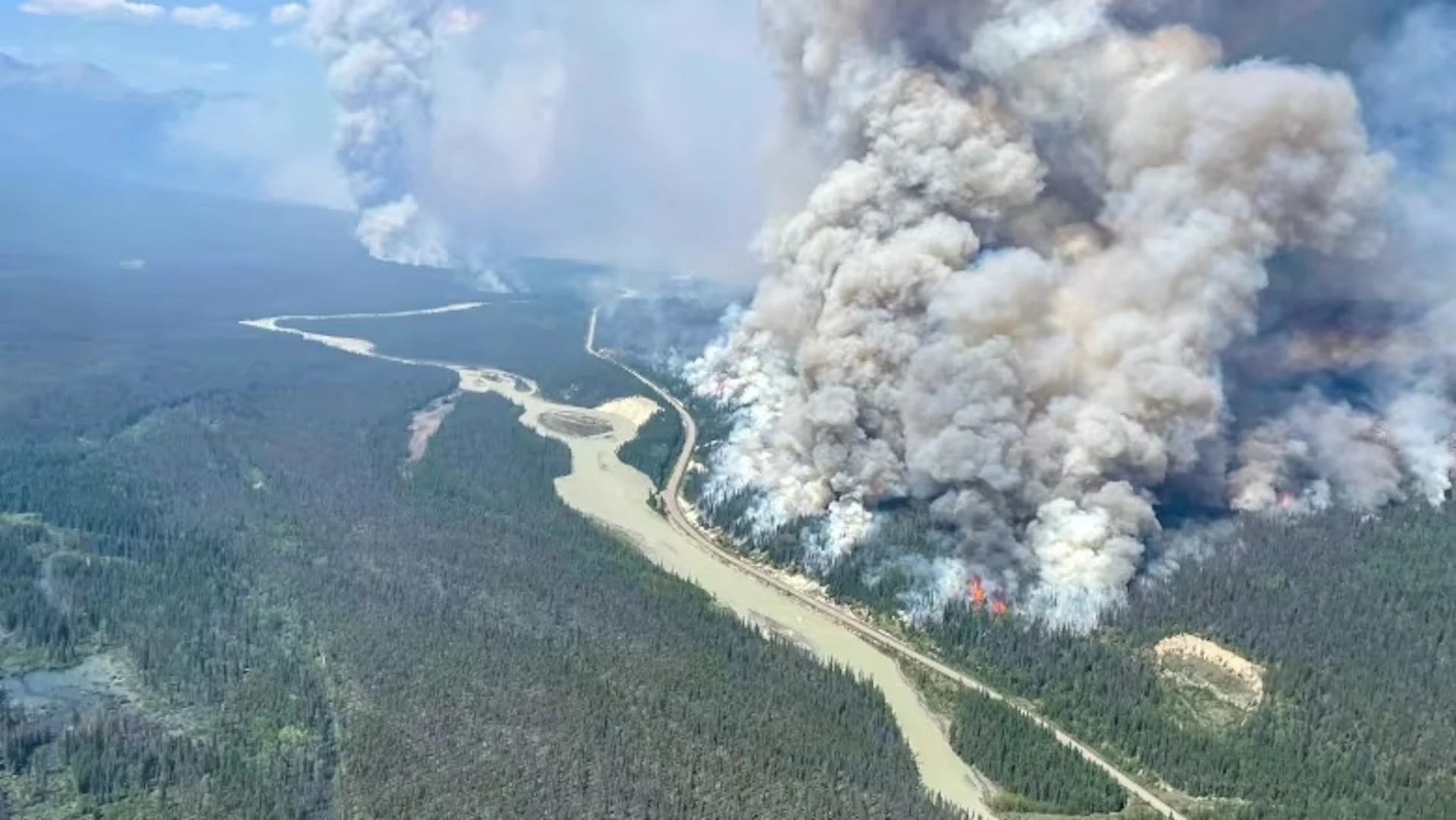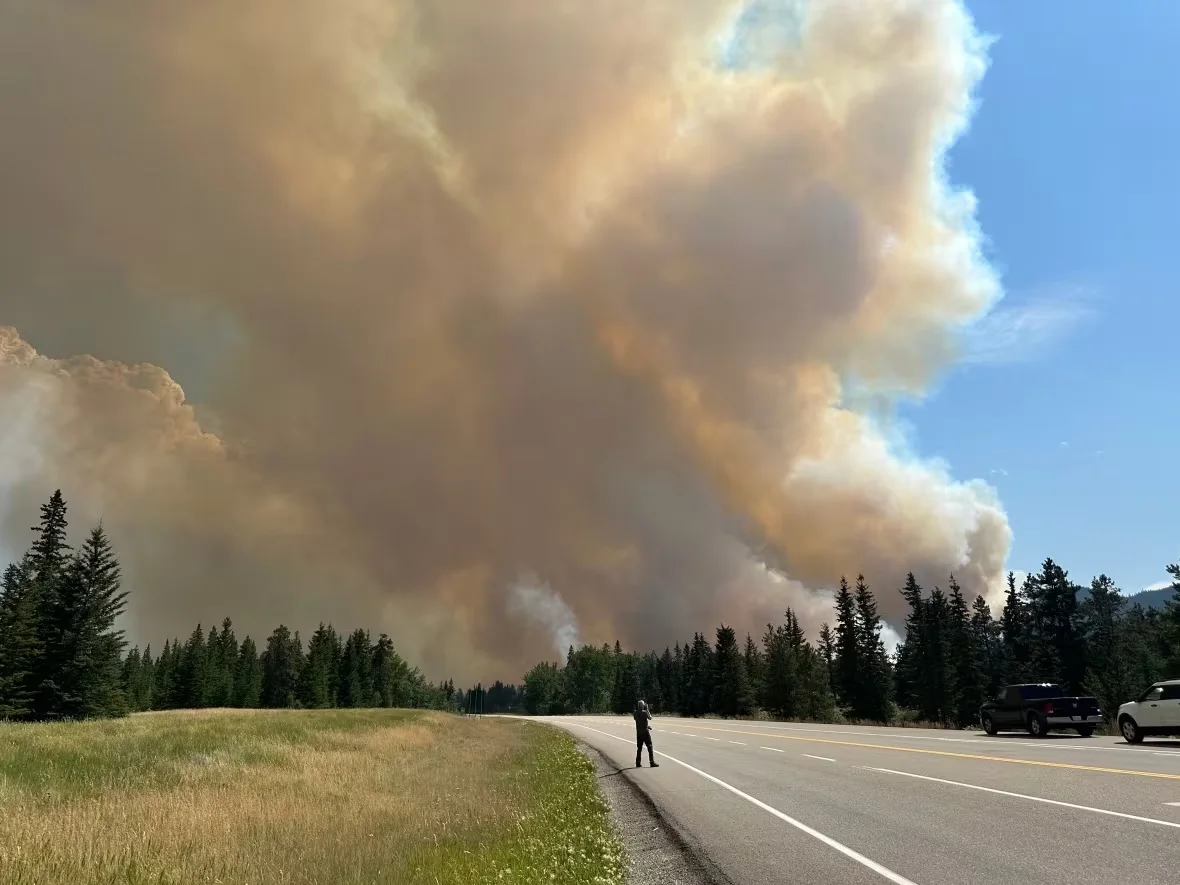
Summer could be over long before fight to tame Jasper wildfire is won
The wildfire that incinerated hundreds of homes in Jasper and destroyed thousands of hectares of forest is expected to remain a threat on the national park landscape for months.
Parks Canada officials say they are preparing for a prolonged and difficult battle with the blaze. By burning deep underground and feeding off fuels untouched by recent rains, the fire threatens to resurface repeatedly, even areas that appear extinguished on the surface.

With the federal and provincial governments matching donations to the Canadian Red Cross, every $1 donated will become $3 to support those most impacted by wildfires in Alberta.
CANADA'S WILDFIRES: Visit The Weather Network's wildfire hub to keep up with the latest on the active wildfire season across Canada
Landon Shepherd, Parks Canada incident commander, said crews are braced and prepared to keep fighting flares on the fire until well into autumn.
Shepherd said progress has been made in protecting the community from further damage, but the fire remains volatile.
"The long-term prognosis is maybe a little bit less rosy in terms of overall control of the wildfire," Shepherd said during a news conference Tuesday.
"We're expecting that the fire season will continue, like it has for the last five fire seasons, where it may extend right into early November."
"We're geared up and braced that we might be dealing with wildfire for as long as that. And we're hoping to continue to get assistance from Mother Nature."

(Craig Ryan/CBC)
He said the fire, like other large fires in western Canada, may smoulder underground until next spring. But the focus now is on minimizing the threat of potential flares.
A fire of this magnitude and strength must be methodically extinguished, Shepherd said.
The fire has moved into the forest floor with hidden hot spots that can rise to the surface when conditions again become hot and dry. Once the flames rise to the surface and move into the trees, the fire can again move and expand quickly and pose a greater danger to crews and the community.
The recent rain was not enough to extinguish that threat, Shepherd cautioned.
"The larger fuels like logs and trees and roots in the ground, those deeper fuels, they're not affected," he said. "Our concern right now is just that [the fire] carries over through these light rain events and then push back up."
The fire has now destroyed 34,000 hectares and continues to burn out of control.

(Parks Canada via CBC)
Weekend rain helped stifle the flames but the fire is expected to continue burning long after it's deemed safe for hundreds of evacuated residents to return home.
Portions of the fire will remain out of control, even when evacuation orders are lifted, Shepherd said. The most dangerous parts of the fire, however, must be considered contained before the gates to the park open to residents.
"It's initially a fast pass to sort of knock down things that are moving quickly, but then it's about following up with rooting out any of those heat sources," he said.
"When we have the drought conditions that we're dealing with, it's a slow and painful process ... especially when the stakes are as high as they are."
Parks officials said favourable weather conditions, including cooler temperatures and heavy rain over the weekend helped crews make progress in dousing hot spots and protecting critical infrastructure both inside and outside of the townsite.

(Josh McLean/CBC)
More than 20,000 people were evacuated from Jasper National Park two weeks ago as fires burning to the north and south moved in.
Two days later, sheets of orange flames, fanned by severe winds and arid conditions, crossed into the townsite, burning entire neighbourhoods to the ground.
By morning, about one-third of the townsite — 358 of the town's 1,113 structures — were destroyed.
Despite the reprieve provided by the weather, officials have cautioned that the fire could burn for weeks, if not months.
Planning for a phased re-entry have slowly ramped up. While evacuation orders remain in effect across the national park, residents of the townsite are now being allowed to survey the damage firsthand.
Bus tours of the devastation for residents whose homes were lost or damaged began Monday. About 259 households have registered for the tours, representing around 563 individual Jasper residents.
The tours were temporarily postponed temporarily on Sunday due to the death of a firefighter on the front lines.
A 24-year-old Calgary man who had been fighting the flames northeast of town was fatally injured Saturday by a falling tree.
WATCH: How is wildlife faring after the wildfire?
The man — who RCMP say was part of the Rocky Mountain House Fire Base — was among hundreds of firefighters who are in Alberta to fight the massive wildfires affecting the province.
Reception centres in Grande Prairie, Calgary and Edmonton continue to provide support for evacuees.
The province and Alberta wildfire officials are holding a telephone town hall for wildfire evacuees on Tuesday evening from 6 p.m. to 7:30 p.m. Evacuees can join online at alberta.ca/emergency or by phone at 1-833-380-0691.
Thumbnail courtesy of Jasper National Park/Facebook via CBC.
The story was originally written by Wallis Snowdon and published for CBC News.










